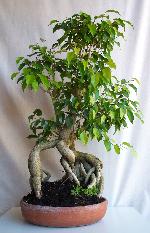 |
 |
 |
What is Coeliac Disease?
Coeliac disease (see-liak) is also known as gluten intolerance. People with Coeliac disease modify their diet to remove all foods containing gluten.
Gluten in wheat is a mixture of two proteins, gliadin and glutenin, others exist in rye, barley and oats. They make breads and cakes spongy and firm, rather than crumbly. In Coeliacs, gluten canít be broken down or digested and it becomes a poison to the body. The immune system attacks it and we feel sick. The trouble with diagnosis is that itís very hard to work out what has made us sick. If no glutenous foods are eaten, the stomach lining heals and we become well. Then we unknowingly eat gluten and become sick again.
Gluten containing foods:
Bread, pasta and breakfast cereals
Biscuits, cakes and pastries
Malt vinegar, soy sauce, mustard and mayonnaise (happily, many are now manufactured gluten free)
Some tinned soups and sauces
Gluten is also hidden in some foods such as crisps and similar snacks, as well as chips in restaurants
Cooking oil (mixed vegetable oil) can contain wheat-germ oil (products must now show wheat derived content on their labels)
Beer, whiskey, Baileys and other gluten grain alcoholic drinks (all distilled spirits are gluten free)
Oats
Cous-Cous
(Contact the Coeliac Society of Australia for more information)
Gluten-free foods:
All fruit and salads
All Potatoes and other vegetables
Rice, maize and nuts
Red meat, chicken, fish, eggs and dairy products
Is it forever?
Coeliac disease is a permanent condition and only the removal of gluten can stop it from causing illness.
How is it diagnosed?
Coeliac disease is sometimes diagnosed in babies after weaning, when cereals are first introduced into the diet. Often it does not become apparent until the stomach lining is seriously damaged leading to other symptoms such as hypothyroidsm, iron deficiency, osteoporosis, anaemia or unexplained lethargy. It is best to talk to a doctor or specialist about symptoms of Coeliac Disease. They vary very much from person to person.
Who is affected?
At the moment diagnosis indicates that the condition affects up to 1 in 100 people in the United Kingdom, Europe, Australia and the USA. Some research papers indicate as high as 1 in 70 people with the disease. Coeliac disease is hereditary Ė if someone in the family is diagnosed with the disease it means that other members of the family are at risk too. Babies, children, teenagers, middle aged and elderly people all get diagnosed at various stages of the disease and can continue their lives being healthy. If you think that you may be gluten intolerant it is important to seek medical guidance and receive proper diagnosis, then understand what foods contain gluten and remove them from your diet.
Liana (Bonsai Guru) has Coeliac Disease:
Liana had undiagnosed Coeliac Disease until the age of 38. A combination of extreme illness, weekly hospital emergency visits, fainting, vomiting, constipation and headaches lead to final diagnosis via blood test and endoscopy. Now her health is 100% improved and life is much easier. Hypothyroidsm, lactose and gluten intolerance limit the choices somewhat, but there are many wonderful treats like seafood, rice and rice noodles and meats that can make a diet delicious.
We thought it would be nice to share with you this knowledge as there may be lots of people out there who have just been diagnosed and could use a little guidance, or others who feel very unwell and donít know what to ask their doctors.
Here are some useful links:
http://www.gflinks.com/
http://www.coeliac.org.au/